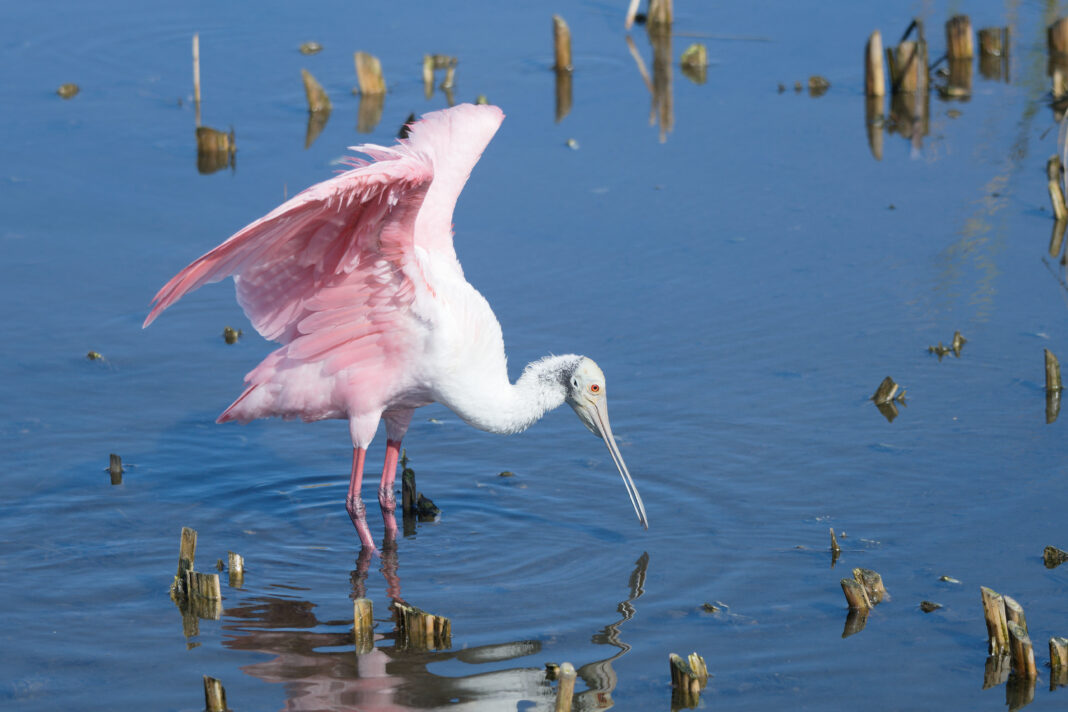HARLINGEN — Rio Grande Valley wildlife refuges have added nearly 6,500 new acres of habitat by buying up private lands adjacent to the existing refuges.
Laguna Atascosa National Wildlife Refuge added 4,933 acres, including one parcel of 3,361 acres in Cameron County, and another 1,512 acres in the area known as Holly Beach.
The Lower Rio Grande Valley National Wildlife Refuge added 1,477 acres to the La Sal Vieja tract, which surrounds one of the salt dome areas in north Hidalgo County.
The addition of acreages to the refuge, purchased from property owners for undisclosed sums, is an ongoing effort by the U.S. Fish and Wildlife Service which operates the refuges. Much of what formerly was private land may now be opened to the public for hiking, birding and hunting opportunities.
“These public lands offer access to a host of popular activities like hiking, hunting and fishing, while also providing vital habitat for thousands of wildlife species,” said Amy Lueders, USFWS Southwest regional director. “Conservation stewardship and increasing equitable access to public lands are essential components of the ‘America the Beautiful’ initiative. We encourage Texans to come visit their national wildlife refuges to connect with the outdoors and experience some of the state’s most iconic ecosystems, and the fish and wildlife that rely on them.”
Additional tracts added to Laguna Atascosa include a 53-acre former aquaculture facility that will be shallowly flooded to enhance surrounding vegetation to benefit wildlife, and several tracts of barrier island habitat on South Padre Island that will benefit native vegetation and wildlife.
At the Lower RGV refuge, the acreage around La Sal Vieja has both natural and cultural significance since the salt lakes formed in the area have long been used by Native Americans as a source for valuable salt.
Another tract of 72 acres of dense native brush will provide cover and breeding habitat for resident wildlife species including white-tailed deer, javelina, coyote, bobcat, doves and potentially the endangered Texas ocelot subspecies.
A third tract, consisting of 10 acres along the Rio Grande, contains riparian floodplain vegetation that will benefit opossums, eastern cottontails, coyotes, raccoons, striped skunks, bobcats, green jays, golden-fronted woodpeckers, doves, flycatchers, hawks, kestrels and caracaras, the USFWS said in a news release.
The new additions to the existing refuges in Texas brings total acreage at 19 national wildlife refuges to nearly 7,000 acres.
Other refuges which added land include:
>> Balcones Canyonlands NWR acquired more than 307 acres of prime golden-cheeked warbler and black-capped vireo habitat in Travis County, growing the refuge to more than 25,000 total acres.
>> Anahuac NWR acquired more than 270 acres of remnant upland prairie habitat to provide necessary wintering, migrating, and nesting habitat for resident and migratory bird species on the Texas Chenier Plain.
>> Neches River NWR acquired more than 96 acres of bottomland hardwoods adjacent to the Neches River. This acquisition will increase recreational access for canoeing, kayaking, hunting, fishing, hiking, photography and environmental education.
The acquisitions were funded with the aid of a number of non-profit conservation partners and private donors, including The Conservation Fund, Friends of the Wildlife Corridor and the Delta Lake Irrigation District.
Additionally, USFWS used Land and Water Conservation Funds, Migratory Bird Conservation Funds, Recreational Access Funds, Deepwater Horizon Natural Resource Damage Assessment Funds, and the National Fish and Wildlife Foundation’s Gulf Environmental Benefit Funds in combination with $15.7 million in federal acquisition funds.





